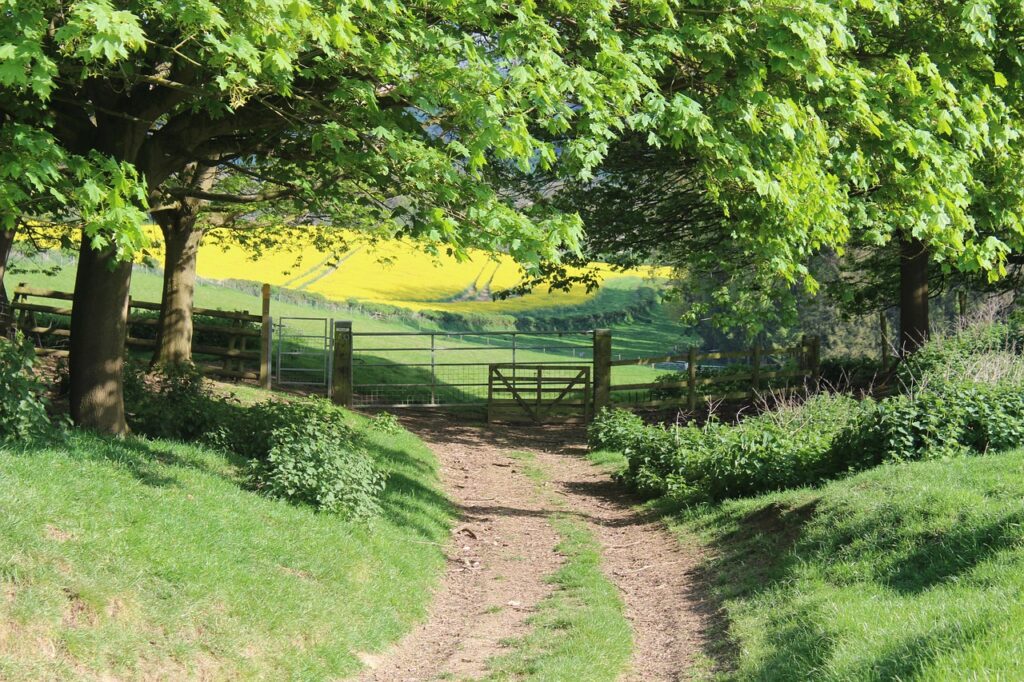Have you ever admired the beautiful, rugged landscapes of the Cotswolds and wondered about the history behind those iconic dry stone walls? These walls are not just a pretty backdrop; they tell a story that reaches deep into the past, intertwining with the history and culture of the region. Let’s uncover the origin and significance of the Cotswold dry stone walls, shall we?

Understanding Dry Stone Walls
To appreciate the Cotswold dry stone walls fully, it’s essential first to understand what dry stone walls are. These are structures made from carefully stacked stones, without the use of mortar or concrete to hold them together. The art of building these walls is a skill that has been passed down through generations, highlighting the craftsmanship and ingenuity of those who built them.
Characteristics of Dry Stone Walls
Dry stone walls are typically constructed with local stone, which means they blend beautifully with the surrounding landscape. Here are some characteristics that define these walls:
| Characteristic | Description |
|---|---|
| Materials | Primarily built using local limestone, which is abundant in the Cotswold region. |
| Construction | Stones are meticulously chosen and placed, ensuring stability and durability. |
| Design | Often features a slightly tapering shape, wider at the base to help withstand weather elements. |
| Height and Shape | Varies but often reaches several feet in height and can curve and bend to fit the land’s contours. |
Understanding these characteristics gives you a clearer picture of why dry stone walls have stood the test of time across the Cotswold countryside.
Historical Background
The history of dry stone walls in the Cotswolds is rich and varied, dating back thousands of years. They are an essential part of the landscape and represent the agricultural practices of the region.
Early Beginnings
The origins of dry stone walls in the Cotswolds can be traced back to the prehistoric era. Early farmers required boundaries for their livestock and fields, and they utilized the stones that were naturally available in the landscape.
Roman Influence
When the Romans invaded Britain around 43 AD, they brought with them advanced building techniques and a broader understanding of agriculture. Their influence can be seen in the development of more systematic wall construction, including improved methods of sourcing and placing stones.
Medieval Expansion
During the medieval period, the demand for pasture land grew due to an increase in population and livestock. This led to a surge in wall construction. The walls served to separate fields and protect crops while also marking ownership, a crucial aspect of agricultural life at the time.
The Craft of Dry Stone Walling
Building a dry stone wall invites curiosity about the craftsmanship involved. It might seem straightforward, but this art requires skill, knowledge, and respect for materials.
Techniques Used in Construction
Dry stone walling employs several techniques to ensure strength and stability. Here are some key techniques:
- Through-stones: These are longer stones placed through the wall, connecting both sides. They help to bind the structure and increase strength.
- Capping stones: These flat stones are placed at the top of the wall to provide a finished appearance while also helping to keep the wall intact against weather elements.
- Bedding: Stones are placed on a bed of smaller stones or gravel to facilitate drainage and avoid water damage.
Training and Skills
Traditionally, dry stone walling was learned through apprenticeships, where a young waller would work alongside a skilled craftsman. Today, many organizations offer courses to keep this craft alive. Elements like stone selection, understanding weight distribution, and mastering the different types of joints are all part of the training.
Ecological Importance of Dry Stone Walls
The Cotswold dry stone walls are more than just historical structures; they also play a vital role in the local ecosystem.
Habitat Creation
These walls provide shelter and habitat for various wildlife, including small mammals, birds, and insects. The crevices in the walls can support plant life, creating a diverse mini-ecosystem.
Soil Management
They aid in soil management by preventing soil erosion and runoff, allowing for better water retention in the surrounding fields. This can enhance agricultural productivity and protect against the detrimental effects of heavy rain.

Cultural Significance
The cultural value of Cotswold dry stone walls cannot be overlooked. They are significant not just as functional structures but also as symbols of the heritage of the area.
Regional Identity
These walls have become synonymous with the Cotswold region. They are part of the charm that draws visitors from around the world. The unique landscapes, characterized by these walls, contribute to the sense of identity for local residents.
Preservation Efforts
With the changing agricultural practices and modern development, there has been a decline in traditional walling. However, many organizations and local communities are working tirelessly to preserve this important part of their heritage through restoration projects and conservation efforts.
Modern-Day Relevance
In contemporary times, the Cotswold dry stone walls continue to hold significance, both practically and aesthetically.
Sustainable Practices
As sustainable agriculture becomes more relevant, many farmers are reverting to traditional practices that include dry stone walls. These walls can serve as functional fences that enhance biodiversity while being environmentally friendly.
Artistic Inspiration
Artists and designers have also found inspiration in the beauty and simplicity of these walls. You’ll find that they are often used in landscaping and garden designs for their rustic charm.

Visiting Cotswold Dry Stone Walls
If you’re planning a trip to the Cotswolds, you won’t want to miss the chance to see these walls up close.
Walking Trails
Numerous walking trails meander through the Cotswold countryside, offering breathtaking views of dry stone walls set against rolling hills. The Cotswold Way National Trail is a particularly popular route that showcases these magnificent structures.
Learning Opportunities
You can also find workshops and local tours that provide insight into the history and craft of dry stone walling. Engaging in hands-on activities can deepen your appreciation for this age-old skill.
Conclusion
Reflecting on the origins and evolution of the Cotswold dry stone walls reveals their significance on multiple levels – historical, ecological, cultural, and modern. These walls connect us to the past while remaining relevant in the present and future.
As you walk through the Cotswolds, take a moment to appreciate these incredible structures. Remember that each stone has a story, each wall represents a journey, and collectively, they showcase the rich tapestry of life in the Cotswolds. Exploring this historic aspect of the region can truly enrich your experience as you enjoy the stunning scenery and learn about the craftsmanship that has endured for centuries.
